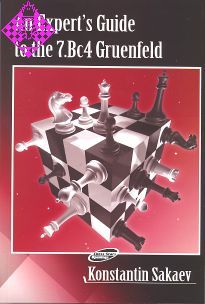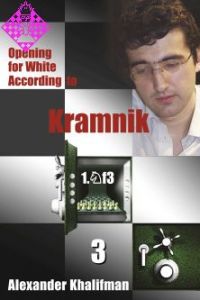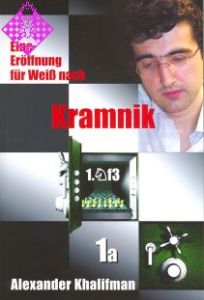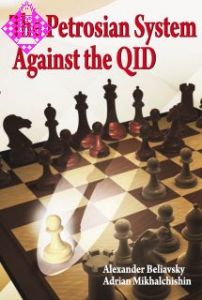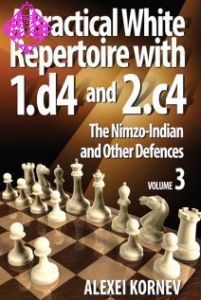Artikelnummer
LOSAKAEGTT7BC4G
An Expert's Guide to the 7.Bc4 Gruenfeld
426 Seiten, kartoniert, Chess Stars, 1. Auflage 2006
Aus der Reihe »Current Theory and Practice Series«
Final vergriffen
In his new book GM Sakaev analyses all major systems after 1.d4 Nf6 2.c4 g6 3.Nc3 d5 4.cxd5 Nxd5 5.e4 Nxc3 6.bxc3 Bg7 7.Bc4. He also pays considerable attention to unusual, but tricky schemes as 7...0-0 8.Ne2 Qd7 and 8...Nc6. The author shows how Black could equalise when White deviates from the most testing variations, like in the case of 7. ..c5 8.Ne2 Nc6 9.Be3 0-0 and now 10.Rc1 or 10.Rb1. Of course the focus of the book is on the topical position which arises after 7...c5 8.Ne2 Nc6 9.Be3 0-0 10.0-0. The readers will find a detailed explanation and analysis of all reasonable continuations with Sakaev's recommendations where to look for an advantage. The author reveals some very promising novelties on the main road of his favourite variation.
Sakaev's work is oriented partially to represent the point of view of White and it is intended to help players create problems for Black in the Gruenfeld Defence. Still it would be interesting for the players who enjoy playing the Gruenfeld Defence with Black as well. This book has summarized the contemporary theory up to March 10 2006.
Sakaev's work is oriented partially to represent the point of view of White and it is intended to help players create problems for Black in the Gruenfeld Defence. Still it would be interesting for the players who enjoy playing the Gruenfeld Defence with Black as well. This book has summarized the contemporary theory up to March 10 2006.
| EAN | 9789548782487 |
|---|---|
| Gewicht | 500 g |
| Hersteller | Chess Stars |
| Breite | 14,5 cm |
| Höhe | 21,5 cm |
| Medium | Buch |
| Erscheinungsjahr | 2006 |
| Autor | Konstantin SakaevAnker Aasum |
| Reihe | Current Theory and Practice Series |
| Sprache | Englisch |
| Auflage | 1 |
| ISBN-13 | 9789548782487 |
| Seiten | 426 |
| Einband | kartoniert |
Konstantin Sakaev is a well known strong grandmaster. One of his strengths is his opening preparation. I can say this based on my own experience as I played him recently in the European Championship and eventually lost with black after having been not far away from a draw. Sakaev published a book in 2004 about the same line: 1.d4 Nf6 2.c4 g6 3.Nc3 d5 4.cxd5 Nxd5 5.e4 Nxc3 6.bxc3 Bg7 7.Bc4 as this book: „How to Get the Edge Against the Gruenfeld”, and I was curious to see how much new material the new book would have. It was enough to put the two books beside each other on my table to know the answer. While the old book was 166 pages, the new one is massive 426 pages. Sakaev also answers this question himself in the preface:
„Nowadays, the Bc4 system is an integral part of the opening repertoire of numerous top-class grandmasters including the World Champion Topalov.
I have tried to touch that subject in writing back in the year 2004 - I published a book in English about that system and it enjoyed a great popularity all over the world. It turned out that the main topic of interest of the chess fans was whether a top-level professional player was going to share with the public his sacred novelties and secret analysis ? I will answer that question for the sceptics - yes - I decided to give it a try! I have collected all the available theoretical material, I have worked on it and I have added plenty of my original analysis, which had been accumulated in the process of preparation for my games as well as especially intended for the book itself.”
The new book puts main emphasis on similar lines as the old book and is clearly based on it. Like the old book, it is written to some extend from white’s point of view. Like it’s title suggests, it is considerably more thorough covering the whole line and not only a repertoire for white. It is therefore more suitable for black than the old book.
What I find most important in chess books is the quality and amount of new analysis together with clear presentation of the material.
I like that the book has more detailed and thorough analysis because the lines are quite complicated and strategically difficult.
The book covers the development in the line up to march 10th 2006.
When an author has really digged deeply into an opening and analysed himself a lot of lines he can usually predict some of the next steps in the development in the line. I compared the analysis in the book with games played after that date to see how well it predicts the future.
I especially looked at games with high rated players. Some games e.g. :
Turpin-Ernst, Thomas played in Rilton Cup in December 2005, Stankovic-Seel, Christian, Nielsen-Holzke Bundesliga 2005/6 were surprisingly not mentioned in the book.
I found it quite bad Van Wely-Sutovsky 14.07.2005 Dortmund was not mentioned. This game ended after a changed move order in a topical variation that is analysed on page 241 in the new book.
Also bad: Van Wely-Svidler from the same Dortmund tournament in 2005 is not included. Sakaev gives only Rc1 with the idea d5. Van Wely played Qd2 with the idea Rad1 and then d5.
In other cases e.g. Nielsen - Mikhalevsky we see the book correctly predicting the line that Mikhalevsky played as the mainline and also having the correct assessment of this variation. Also in other games played after the book was published prove the quality of the analysis in the book e.g. Likavsky-Petr after 20th march, Quinn-Knott, Eljanov-Areschenko, Topalov-Svidler shortly before 20th march, Najer-Krasenkow.
Sakaev shows improvement to his own games e.g. Good Sakaev Dvoirys 2004 this game was played shortly after the old book was published. Sakaev shows how he could improve his play after Dvoirys novelty. Improvement on Sakaev-Kurnosov and Sakaev-Najer which where played in 2005 are also included.
In general we see that Sakaev missed some games that where played while he was working on the book. These lines are therefore not always analysed in the book. Comparison with games that were subsequently played show that the analysis in the book is of high quality.
The lines have been played rather much also on top level. Some variations that were shortly mentioned sub variations in Sakaevs previous book are now very topical. I am impressed by the depth and accuracy of Sakaevs analysis. Sometimes there is a new move compared to the old book recommended quite deep in the variations e.g. on move 25.
Usually Sakaev recommends the best move in his mainlines. Sometimes I don’t quite agree with assessments of sidelines like on page 240 if black plays 20…Qb6 where Sakaev gives 21.Qxb6 axb6 unclear although white seems better after 22.fxe5 Rxe5 23.Ng3 with the threat Rxf6 and if 23…f5 then 24.Bf4 is strong.
I like that the bulk of the new analysis is in the most popular and topical lines. The space is not wasted on sub lines but on the really critical ones. This is very important because some of the mainlines are very complicated and theoretical with the tabias starting after move 20 and then all the different variations are left. Important improvements on the old book are e.g. on page 296 we have a variation that was considered good for white in the old book and 23…Bd3 given as absolutely the only move for black. In the new book 23…Qc7! Is recommended and after more than two pages of analysis it seems that black can hold. In some cases there are new evaluations or improvements as late as in move 31.
The book mainly covers the same lines as in the old book, but goes deeper into the lines.
Generally I am very happy with the book. It has high quality analysis. Comparison with recent games is very positive for the book. Main emphasis has been put on deep analysis of the critical lines which will help the tournament player a lot.
I like that Sakaev writes conclusions after chapters and lines where he clearly states which line is recommendable for each side. This gives the reader additional information compared only to be presented e.g. two possible variations that both end in unclear position.
The book managed to inspire me to give the Bc4 a try myself in a recent Open Tournament in Lodi in Italy where I finished in 6th place winning 600 Euro. Playing this variation with white resulted in my only loss in the tournament. Analysing this loss it seems to me that an improvement would be to put more emphasis on analysis of typical positions in the book. One example is the positions where black plays something like …c5, …cxd4, …Nc6, …b6, …Bb7, …Rc8 and then something like …Qd7 or ..Qd6 or even …e6. A tabia having this character can arise after many move orders for black. Sakaev normally recommends that white exchanges the black squared bishops with Be3 or Bg5, Qd2 and eventually Bh6. The typical middle game tabia that arises after that is neglected in the book with parts of the book where this could be covered like the complete games focusing on more tactical lines. Another question is when important strategical ideas should be played and when not e.g. when white should answer …c5 with d5. This move is sometimes good for white, sometimes not. It can be difficult for the reader to get sufficient understanding of these important things while travelling through the forest of variations presented. Explanations of middle game tabias and strategical ideas possibly in the form of a „Quick Repertoire” chapter like in the Safest Sicilian book and in the complete games sections would improve the book.
The book gets 5 out of 5 stars.
I can recommend it to every chess fan, especially those that play 1.d4 or answer 1.d4 with the Gruenfeld. The depth of analysis sets an example for other authors. Some care must, however, be taken because of the strategical complexity of the variations, the amount of analysis involved and the emphasis of the book on concrete variations. The reader is well advised to find the strategically important games herself in a database and look at them in order to improve understanding of the typical middle games that arise in the variation.
IM Hedinn Steingrimsson
„Nowadays, the Bc4 system is an integral part of the opening repertoire of numerous top-class grandmasters including the World Champion Topalov.
I have tried to touch that subject in writing back in the year 2004 - I published a book in English about that system and it enjoyed a great popularity all over the world. It turned out that the main topic of interest of the chess fans was whether a top-level professional player was going to share with the public his sacred novelties and secret analysis ? I will answer that question for the sceptics - yes - I decided to give it a try! I have collected all the available theoretical material, I have worked on it and I have added plenty of my original analysis, which had been accumulated in the process of preparation for my games as well as especially intended for the book itself.”
The new book puts main emphasis on similar lines as the old book and is clearly based on it. Like the old book, it is written to some extend from white’s point of view. Like it’s title suggests, it is considerably more thorough covering the whole line and not only a repertoire for white. It is therefore more suitable for black than the old book.
What I find most important in chess books is the quality and amount of new analysis together with clear presentation of the material.
I like that the book has more detailed and thorough analysis because the lines are quite complicated and strategically difficult.
The book covers the development in the line up to march 10th 2006.
When an author has really digged deeply into an opening and analysed himself a lot of lines he can usually predict some of the next steps in the development in the line. I compared the analysis in the book with games played after that date to see how well it predicts the future.
I especially looked at games with high rated players. Some games e.g. :
Turpin-Ernst, Thomas played in Rilton Cup in December 2005, Stankovic-Seel, Christian, Nielsen-Holzke Bundesliga 2005/6 were surprisingly not mentioned in the book.
I found it quite bad Van Wely-Sutovsky 14.07.2005 Dortmund was not mentioned. This game ended after a changed move order in a topical variation that is analysed on page 241 in the new book.
Also bad: Van Wely-Svidler from the same Dortmund tournament in 2005 is not included. Sakaev gives only Rc1 with the idea d5. Van Wely played Qd2 with the idea Rad1 and then d5.
In other cases e.g. Nielsen - Mikhalevsky we see the book correctly predicting the line that Mikhalevsky played as the mainline and also having the correct assessment of this variation. Also in other games played after the book was published prove the quality of the analysis in the book e.g. Likavsky-Petr after 20th march, Quinn-Knott, Eljanov-Areschenko, Topalov-Svidler shortly before 20th march, Najer-Krasenkow.
Sakaev shows improvement to his own games e.g. Good Sakaev Dvoirys 2004 this game was played shortly after the old book was published. Sakaev shows how he could improve his play after Dvoirys novelty. Improvement on Sakaev-Kurnosov and Sakaev-Najer which where played in 2005 are also included.
In general we see that Sakaev missed some games that where played while he was working on the book. These lines are therefore not always analysed in the book. Comparison with games that were subsequently played show that the analysis in the book is of high quality.
The lines have been played rather much also on top level. Some variations that were shortly mentioned sub variations in Sakaevs previous book are now very topical. I am impressed by the depth and accuracy of Sakaevs analysis. Sometimes there is a new move compared to the old book recommended quite deep in the variations e.g. on move 25.
Usually Sakaev recommends the best move in his mainlines. Sometimes I don’t quite agree with assessments of sidelines like on page 240 if black plays 20…Qb6 where Sakaev gives 21.Qxb6 axb6 unclear although white seems better after 22.fxe5 Rxe5 23.Ng3 with the threat Rxf6 and if 23…f5 then 24.Bf4 is strong.
I like that the bulk of the new analysis is in the most popular and topical lines. The space is not wasted on sub lines but on the really critical ones. This is very important because some of the mainlines are very complicated and theoretical with the tabias starting after move 20 and then all the different variations are left. Important improvements on the old book are e.g. on page 296 we have a variation that was considered good for white in the old book and 23…Bd3 given as absolutely the only move for black. In the new book 23…Qc7! Is recommended and after more than two pages of analysis it seems that black can hold. In some cases there are new evaluations or improvements as late as in move 31.
The book mainly covers the same lines as in the old book, but goes deeper into the lines.
Generally I am very happy with the book. It has high quality analysis. Comparison with recent games is very positive for the book. Main emphasis has been put on deep analysis of the critical lines which will help the tournament player a lot.
I like that Sakaev writes conclusions after chapters and lines where he clearly states which line is recommendable for each side. This gives the reader additional information compared only to be presented e.g. two possible variations that both end in unclear position.
The book managed to inspire me to give the Bc4 a try myself in a recent Open Tournament in Lodi in Italy where I finished in 6th place winning 600 Euro. Playing this variation with white resulted in my only loss in the tournament. Analysing this loss it seems to me that an improvement would be to put more emphasis on analysis of typical positions in the book. One example is the positions where black plays something like …c5, …cxd4, …Nc6, …b6, …Bb7, …Rc8 and then something like …Qd7 or ..Qd6 or even …e6. A tabia having this character can arise after many move orders for black. Sakaev normally recommends that white exchanges the black squared bishops with Be3 or Bg5, Qd2 and eventually Bh6. The typical middle game tabia that arises after that is neglected in the book with parts of the book where this could be covered like the complete games focusing on more tactical lines. Another question is when important strategical ideas should be played and when not e.g. when white should answer …c5 with d5. This move is sometimes good for white, sometimes not. It can be difficult for the reader to get sufficient understanding of these important things while travelling through the forest of variations presented. Explanations of middle game tabias and strategical ideas possibly in the form of a „Quick Repertoire” chapter like in the Safest Sicilian book and in the complete games sections would improve the book.
The book gets 5 out of 5 stars.
I can recommend it to every chess fan, especially those that play 1.d4 or answer 1.d4 with the Gruenfeld. The depth of analysis sets an example for other authors. Some care must, however, be taken because of the strategical complexity of the variations, the amount of analysis involved and the emphasis of the book on concrete variations. The reader is well advised to find the strategically important games herself in a database and look at them in order to improve understanding of the typical middle games that arise in the variation.
IM Hedinn Steingrimsson
Der russische GM Konstantin Sakaev war u.a. Jugendweltmeister in Duisburg 1992, Russischer Meister 1999 und Olympiasieger 1998 und 2000. Er ist einer der führenden Exfür die Grünfeldindische Verund will mit seinem neuen Buch - obwohl gegenwärtig die Eröffnungszüge 7.Sf3 und 7.Le3 ziemlich beliebt zu sein scheinen - die Aufmerksamkeit wieder auf 7.Lc4! lenken, gefolgt von 8.Se2. Dieses System wurde von Geller, Bronstein und vor allem von Boris Spasski fortentwickelt und zur scharfen Waffe für Weiß geschmiederzeit ist als ranghöchster Verwohl der Exweltmeister Veselin Topalow zu nennen.
Sakaev will sein voluminöses Werk in erster Linie als Repertoirebuch für Weiß verstanden wissen, wobei in Anbetracht der höchst objektiven Analysen selbstredend auch die Führer der schwarzen Steine eine ganze Menge profitieren können. Zusätzlich zur Aufarbeitung und Aufbereitung des umfangreichen Stoffes hat der Autor viel eigeoriginale Analysen angestellt, so dass insgesamt eine wohlfundierte Zudes Eröffnungssystems auf gegenwärtigem Stand dabei herausist. Wie in Eröfmungswerken üblich, tastet sich der Autor schrittvor von den frühen Abweichungen bis zu den Hauptvarianten, wobei das Ganze in sechs Teilen mit nicht weniger als 30 Kapiteln angeordnet wird:
Teil 1: 1.d4 Sf6 2.c4 g6 3.Sc3 d5 4.c:d5 S:d5 5.e4 S:c3 6.b:c3 Lg7 7.Lc4 und nun folgen einige selten vorkommende Abspiele, wo Schwarz keinen unmittelbaren Druck auf das weiße Zentrum ausübt, etwa mit 7...0-0, oder 7...c5 8. Se2 und nun nicht gleich ...Sc6, oder auch 7...c5 8.Se2 Sc6 9.Le3 c:d4 10.c:d4 Da5 (Kapitel 1-6, S. 9-117).
Teil 2: Nach 7.Lc4 c5 8.Se2 Sc6 9.Le3 0-0 vermeidet Schwarz kompliund forcierte Wege, etwa mittels 10.0-0 Da5/...Sa5/...e6, oder auch mit 10.0-0 c:d4 11.c:d4 Sa5 12.Ld3 b6 bzw. mit 10.0-0 Dc7 11.Tc1 Td8 oder 10.0-0 Ld7 (Kapitel 7-13, S, 118-199).
Teil 3: 7.Lc4 c5 8.Se2 Sc6 9.Le3 0-0 10.0-0 Lg4 11.f3 und jetzt gibt es einige Versuche, den Hauptabspielen aus dem Wege zu gehen, was Sakaev jedoch keiner der beiden Seiten empfehlen möchte, z.B. 11...Ld7 oder 11...Sa5 12.Ld5 bzw. 11...Sa5 12.Ld3 c:d4 13.c:d4 Le6 14.Da4 (Kapi14-16, S. 200-227).
Teil 4: 10.0-0 Lg4 11.f3 Sa5 12.Ld3 c:d4 13.c:d4 Le6 14.d5 mit Angedes Qualitätsopfers 14...L:a1 15.D:a1 erlebt derzeit eine Renaissance, wobei Sakaev die Lage für dynamisch im Gleichgewicht erachtet, jedoch müssen beide Seiten in theoretischer Hinsicht ausgezeichnet präpariert sein, etwa bei der Folge 15...f6 16.Lh6 Te8 17.Kh1 Tc8 (Kapitel 17-21, S. 228-310).
Teil 5: 14.Tc1 L:a2; ein laut Sakaev zu Unrecht nahezu vergessenes Abspiel, welchem er mit der Folge 15.Da4 Lb3 16.Db4 b6 17.Tc3! neues Leben einhauchen will (Kapitel 22-26, S. 311-349).
Teil 6: 10.0-0 Lg4 11.f3 Sa5 12.L:f7+ T:f7 13.f:g4 T:f1+ 14.K:f1 die sog. Sevilla-Variante, benannt nach dem legendären K&K-WM-Match 1987 in der spanischen Stadt, wo sie insgesamt viermal aufs Brett kam. Hier anader Verfasser die Fortsetzungen 14...Dd7, 14...Dd6, sowie 14...c:d4 15.c:d4 e5 16.d5/Tc1/Kg1 (Kapitel 27-30, S. 350-409).
Zum Abschluss gibt es noch 20 Musterpartien aus dem Zeitraum 1965 bis 2004, vom Autor analysiert, wo jeweils Weiß die Oberhand behalten hat (S. 410-426). Bei den vorher im fortlaufenden Buchtext „gut versteckten" zuätzlichen 100 Meisterpartien ist dies übrigens nicht der Fall; dort wird meisremis gespielt.
Summa summarum hat Sakaev ein enzyklopädisches Werk zu 7.Lc4 im Grünfeld-Indischen geschaffen, das sich für Spezialisten, Profis und sehr starke Amateure als Lehr- und Handbuch (auch zum Nachschlagen) durchaus empfiehlt, wobei Kenntnisse der englischen Sprache nicht schaden können.
Mit freundlicher Genehmigung
Dr. W. Schweizer, Rochade Europa 5/2007
_____________________
Die Theorie der Grünfeld - IndiEröffnung ist inzwischen so angewachsen, dass man sie nicht mehr in einem einzigen Buch unterkann, wenn man in die Tiefe gehen will. Es liegt deshalb nahe, eine Stoffauswahl zu treffen.
Der russische Großmeister KonSakaev geht in seinem aktuelWerk aus vom Pflichtprogramm 1. d4 Sf6 2. c4 g6 3. Sc3 d5 4. cxd5 Sxd5 5. e4 Sxc3 6. bxc3 Lg7 7. Lc4.
Obwohl es sich nicht um ein Reper- Buch handelt, erklärt der Verdoch in der Einleitung, dass er ein wenig die Partei des Weißen ergreift. Egal wie Schwarz sich gegen diesen Aufbau wehrt, Sakaev hat es sich zum Ziel gesetzt, Weiß ein Konan die Hand zu geben, wie er nach Vorteil streben kann.
Bücher dieser Art sind natürlich beunruhigend für alle, die mit Schwarz gerne bei Grünfeld - Indisch bleiben möchten. Vielleicht tröstet der Gedanke, dass die Weißen ja auch nicht den gesamten Inhalt im Kopf haben werden.
Wie nützlich Sakaevs Buch auch auf allerhöchster Ebene wäre, wurde jüngst beim Superturnier in Sofia deutlich. In der Partie Topalow -Swidler spielte man 7. ... c5 8. Se2 Sc6 9. Le3 0-0 10. 0-0 Dc7 11. Te1 Td8 12. Lf4 Dd7. Ab Seite 184 erläutert Sakaev ausführlich, dass Weiß 13. dxc5! spielen soll, während er 13. d5 für schwächer hält.
Selbst der amtierende Weltmeister Topalow kannte die Analyse noch nicht, obwohl das Buch wenige Meter entfernt vor der Tür des Spielsaals am Buchstand auslag (Schach Nr. 7 / 2006 Seite 63), zog 13. d5 und unterSwidler in einer tollen Partie.
Das Buch ist empfehlenswert für fortgeschrittene Schachfreunde, deGrünfeld - Indisch in ihrer eigeTurnierpraxis begegnen kann. Englische Sprachkenntnisse sollten vorhanden sein.
Schach Markt 4/2006
Sakaev will sein voluminöses Werk in erster Linie als Repertoirebuch für Weiß verstanden wissen, wobei in Anbetracht der höchst objektiven Analysen selbstredend auch die Führer der schwarzen Steine eine ganze Menge profitieren können. Zusätzlich zur Aufarbeitung und Aufbereitung des umfangreichen Stoffes hat der Autor viel eigeoriginale Analysen angestellt, so dass insgesamt eine wohlfundierte Zudes Eröffnungssystems auf gegenwärtigem Stand dabei herausist. Wie in Eröfmungswerken üblich, tastet sich der Autor schrittvor von den frühen Abweichungen bis zu den Hauptvarianten, wobei das Ganze in sechs Teilen mit nicht weniger als 30 Kapiteln angeordnet wird:
Teil 1: 1.d4 Sf6 2.c4 g6 3.Sc3 d5 4.c:d5 S:d5 5.e4 S:c3 6.b:c3 Lg7 7.Lc4 und nun folgen einige selten vorkommende Abspiele, wo Schwarz keinen unmittelbaren Druck auf das weiße Zentrum ausübt, etwa mit 7...0-0, oder 7...c5 8. Se2 und nun nicht gleich ...Sc6, oder auch 7...c5 8.Se2 Sc6 9.Le3 c:d4 10.c:d4 Da5 (Kapitel 1-6, S. 9-117).
Teil 2: Nach 7.Lc4 c5 8.Se2 Sc6 9.Le3 0-0 vermeidet Schwarz kompliund forcierte Wege, etwa mittels 10.0-0 Da5/...Sa5/...e6, oder auch mit 10.0-0 c:d4 11.c:d4 Sa5 12.Ld3 b6 bzw. mit 10.0-0 Dc7 11.Tc1 Td8 oder 10.0-0 Ld7 (Kapitel 7-13, S, 118-199).
Teil 3: 7.Lc4 c5 8.Se2 Sc6 9.Le3 0-0 10.0-0 Lg4 11.f3 und jetzt gibt es einige Versuche, den Hauptabspielen aus dem Wege zu gehen, was Sakaev jedoch keiner der beiden Seiten empfehlen möchte, z.B. 11...Ld7 oder 11...Sa5 12.Ld5 bzw. 11...Sa5 12.Ld3 c:d4 13.c:d4 Le6 14.Da4 (Kapi14-16, S. 200-227).
Teil 4: 10.0-0 Lg4 11.f3 Sa5 12.Ld3 c:d4 13.c:d4 Le6 14.d5 mit Angedes Qualitätsopfers 14...L:a1 15.D:a1 erlebt derzeit eine Renaissance, wobei Sakaev die Lage für dynamisch im Gleichgewicht erachtet, jedoch müssen beide Seiten in theoretischer Hinsicht ausgezeichnet präpariert sein, etwa bei der Folge 15...f6 16.Lh6 Te8 17.Kh1 Tc8 (Kapitel 17-21, S. 228-310).
Teil 5: 14.Tc1 L:a2; ein laut Sakaev zu Unrecht nahezu vergessenes Abspiel, welchem er mit der Folge 15.Da4 Lb3 16.Db4 b6 17.Tc3! neues Leben einhauchen will (Kapitel 22-26, S. 311-349).
Teil 6: 10.0-0 Lg4 11.f3 Sa5 12.L:f7+ T:f7 13.f:g4 T:f1+ 14.K:f1 die sog. Sevilla-Variante, benannt nach dem legendären K&K-WM-Match 1987 in der spanischen Stadt, wo sie insgesamt viermal aufs Brett kam. Hier anader Verfasser die Fortsetzungen 14...Dd7, 14...Dd6, sowie 14...c:d4 15.c:d4 e5 16.d5/Tc1/Kg1 (Kapitel 27-30, S. 350-409).
Zum Abschluss gibt es noch 20 Musterpartien aus dem Zeitraum 1965 bis 2004, vom Autor analysiert, wo jeweils Weiß die Oberhand behalten hat (S. 410-426). Bei den vorher im fortlaufenden Buchtext „gut versteckten" zuätzlichen 100 Meisterpartien ist dies übrigens nicht der Fall; dort wird meisremis gespielt.
Summa summarum hat Sakaev ein enzyklopädisches Werk zu 7.Lc4 im Grünfeld-Indischen geschaffen, das sich für Spezialisten, Profis und sehr starke Amateure als Lehr- und Handbuch (auch zum Nachschlagen) durchaus empfiehlt, wobei Kenntnisse der englischen Sprache nicht schaden können.
Mit freundlicher Genehmigung
Dr. W. Schweizer, Rochade Europa 5/2007
_____________________
Die Theorie der Grünfeld - IndiEröffnung ist inzwischen so angewachsen, dass man sie nicht mehr in einem einzigen Buch unterkann, wenn man in die Tiefe gehen will. Es liegt deshalb nahe, eine Stoffauswahl zu treffen.
Der russische Großmeister KonSakaev geht in seinem aktuelWerk aus vom Pflichtprogramm 1. d4 Sf6 2. c4 g6 3. Sc3 d5 4. cxd5 Sxd5 5. e4 Sxc3 6. bxc3 Lg7 7. Lc4.
Obwohl es sich nicht um ein Reper- Buch handelt, erklärt der Verdoch in der Einleitung, dass er ein wenig die Partei des Weißen ergreift. Egal wie Schwarz sich gegen diesen Aufbau wehrt, Sakaev hat es sich zum Ziel gesetzt, Weiß ein Konan die Hand zu geben, wie er nach Vorteil streben kann.
Bücher dieser Art sind natürlich beunruhigend für alle, die mit Schwarz gerne bei Grünfeld - Indisch bleiben möchten. Vielleicht tröstet der Gedanke, dass die Weißen ja auch nicht den gesamten Inhalt im Kopf haben werden.
Wie nützlich Sakaevs Buch auch auf allerhöchster Ebene wäre, wurde jüngst beim Superturnier in Sofia deutlich. In der Partie Topalow -Swidler spielte man 7. ... c5 8. Se2 Sc6 9. Le3 0-0 10. 0-0 Dc7 11. Te1 Td8 12. Lf4 Dd7. Ab Seite 184 erläutert Sakaev ausführlich, dass Weiß 13. dxc5! spielen soll, während er 13. d5 für schwächer hält.
Selbst der amtierende Weltmeister Topalow kannte die Analyse noch nicht, obwohl das Buch wenige Meter entfernt vor der Tür des Spielsaals am Buchstand auslag (Schach Nr. 7 / 2006 Seite 63), zog 13. d5 und unterSwidler in einer tollen Partie.
Das Buch ist empfehlenswert für fortgeschrittene Schachfreunde, deGrünfeld - Indisch in ihrer eigeTurnierpraxis begegnen kann. Englische Sprachkenntnisse sollten vorhanden sein.
Schach Markt 4/2006
Mehr von Chess Stars
-
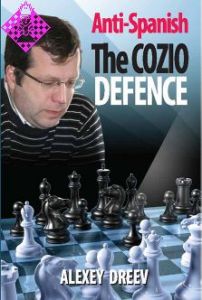 Anti-Spanish. The Cozio Defence21,95 €
Anti-Spanish. The Cozio Defence21,95 € -
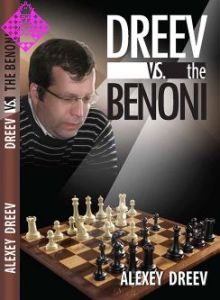 Dreev vs. the Benoni20,95 €
Dreev vs. the Benoni20,95 € -
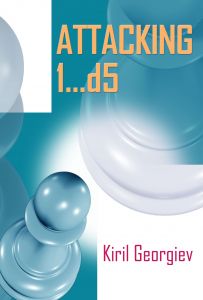 Attacking 1…d5 - vol. 121,95 €
Attacking 1…d5 - vol. 121,95 € - Mehr von Chess Stars

